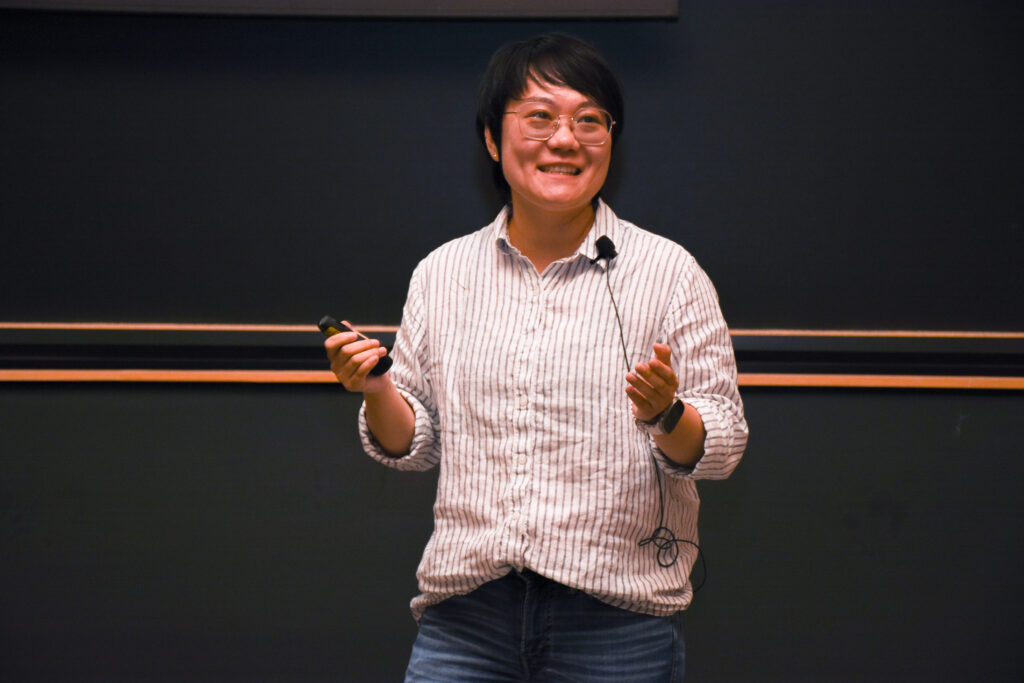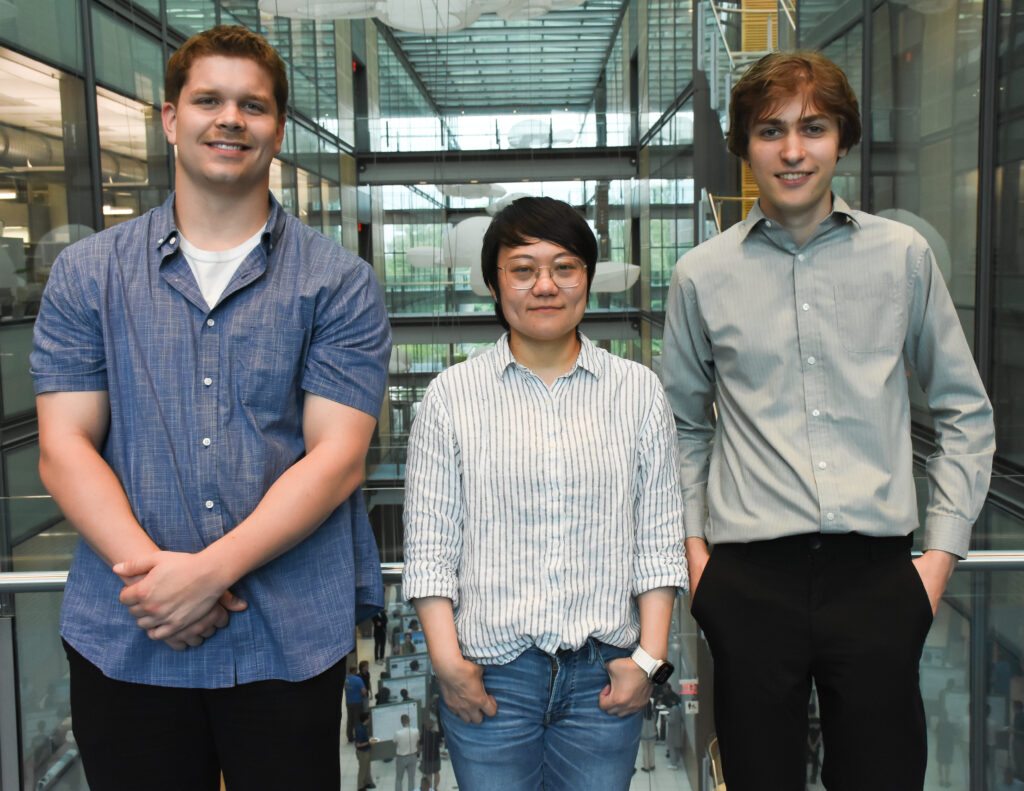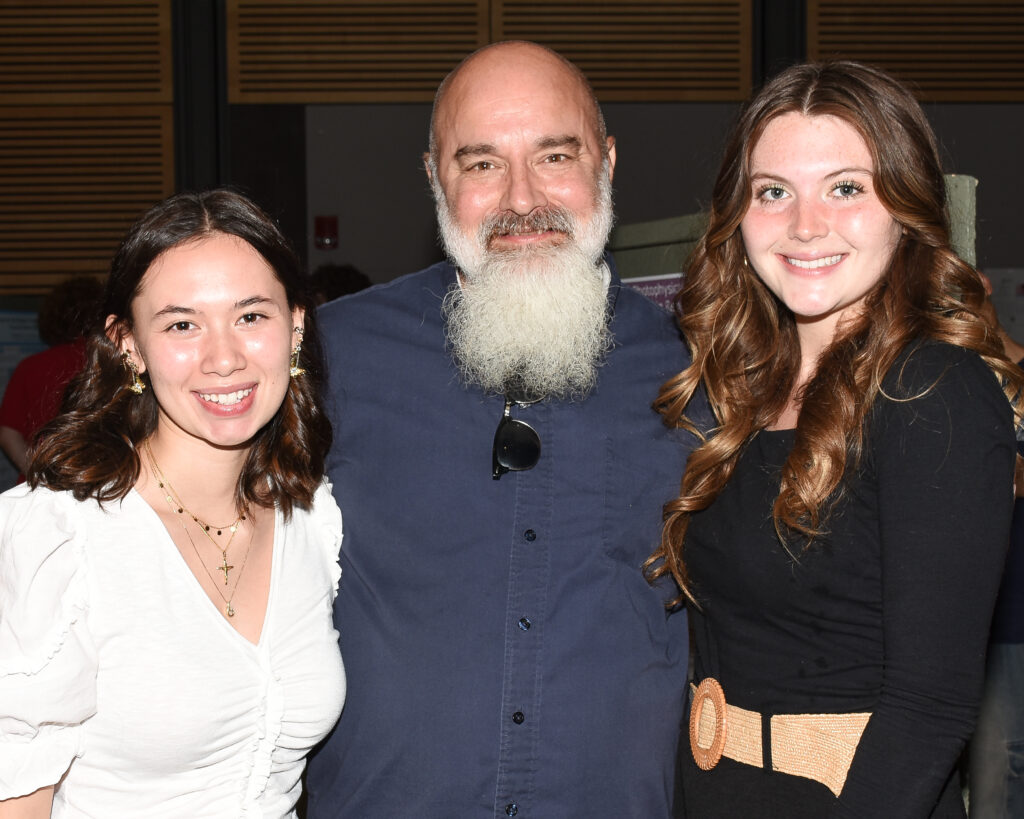Gold-standard Visiting Faculty Research Partnership program notches its fourth year

The Department of Chemistry Visiting Faculty Research Partnership (VFRP) closed out its fourth summer program this month, hosting faculty from the University of Missouri-St. Louis and Radford University and continuing to build the national network of collaborative scholars it started in 2022.
Jinjia Xu, a professor of chemistry at the University of Missouri-St. Louis, worked on a project with the Bocarsly Lab and two undergraduate students who came with her from the St. Louis campus. Timothy Fuhrer, a professor of chemistry at Radford University, worked with the Scholes Lab and two undergrads from the campus in Virginia.
Their progress on selected projects during two months at Frick Lab underscored the value of VFRP, both P.I.s said as they wrapped up their terms. As for their students, future plans took root and became clearer because of the experience they gained. Visiting faculty members each gave formal talks in Taylor Auditorium, and students participated in an end-of-summer symposium and poster session.
Here is a quick look at the Fourth Annual Summer VFRP program.
Jinjia Xu, University of Missouri-St. Louis
Undergraduates Nicholas Johnson and Zachary Moughamian
Project with the Bocarsly Lab: Study of Photoelectrochemical Reduction of CO2 Using P-GaP and P-GaAs Photoelectrodes
Xu’s lab is part of a department of 10 faculty members with a small research base at the newest of four campuses in the Missouri system. Johnson and Moughamian are both rising seniors among 12,000 undergraduates at the public research university.
Xu said that when she found out about VFRP, she scanned Princeton Chemistry’s website faculty pages looking for a professor whose research caught her eye. The Bocarsly Lab, she said, fit the bill.

Visitors from the University of Missouri-St. Louis included, from left: Nicholas Johnson, Professor Xu, and Zachary Moughamian.
“I don’t have much of a teaching load during the summer, so the opportunity to focus just on my research with my students was a unique one,” she said. “Also, we have limited research resources because we’re a very small campus. This was a wonderful way to take advantage of some of the resources here at Princeton and advance our project.”
She chose Johnson and Moughamian to accompany her based on their high GPAs and strong performance in the lab.
Johnson, a chemistry major, worked on selective etching on the surfaces of semiconductors to promote better current through different orientations. He conducted most of his research in Frick’s basement facilities or over at the University’s Imaging and Analysis Center.
“All the faculty here have been very supportive and generous,” said Johnson. “Just the ability to reach out to professors at this type of university—almost the highest you can get—has been really beneficial to my future. I’m very thankful for that.”
Moughamian, a physics major, enjoyed the chance to deepen his skillset in materials science. His work this summer focused on working with Diethylenetriamine (DETA) towards the general goal of reducing CO2 in an electrochemical environment.
“We also took advantage of every opportunity to attend the seminars in our program that Dr. (Susan) VanderKam ran,” said Moughamian. “Those were super important to our careers, like the one on how to apply to grad school. I’m more determined than I was before to go forward with a Ph.D., and my time here has really helped with that.”
Timothy Fuhrer, Radford University, Virginia
Undergraduates Athena Smith and Fiona Steinour
Project with the Scholes Lab: Cavity Quantum Electrodynamics of Aromatic Compounds
Radford, one of Virginia’s eight doctorate-granting public universities, is located in the Highlands between the Blue Ridge and Allegheny mountains. Consequently, it has a huge emphasis on outdoor sports and adventuring.
Fuhrer’s lab there focuses primarily on computational chemistry.

Visitors from Radford University included, from left: Athena Smith, Professor Fuhrer, and Fiona Steinour.
“I’ve been doing summer fellowships with various research labs for seven or eight summers and the one thing I always noticed is that they allow grad students but not undergrads. This one strongly encouraged me to bring undergraduates, which I thought was great. So once I was notified that I was in, I emailed my students and said, ‘Does anyone want to do a fellowship at Princeton this summer?’ “
Smith, a rising senior and physics major, focused on excited-state dynamics of methylene blue and a PDI derivative, two molecules used in their research at Radford.
“Our goal at the beginning of the summer was to make a polariton, which is a light-matter hybrid state that you put into a cavity,” said Smith. “But we went through a rabbit hole because the silver we were using for our metal mirrors was having some sort of interaction between the metal and the molecule. So that’s what I spent my summer working on.
“With the funding we received,” she added, “we were able to do a lot of work. We achieved a lot more data than we expected.”
Steinour is a biology major and pre-med student at Radford. She felt VFRP would be an ideal place to go “more into the chemistry side” of her development. Steinour focused on protoporphyrin IX, a molecule found in brown eggshells that may have some application in solar cells and solar panels. She presented a symposium poster titled: Investigating the Photophysical Properties of Protoporphyrin IX for Potential Use in Renewable Energy Applications.
“We got a few parameters on what worked and what didn’t, so we’re going to start pivoting on using a very similar, pure porphyrin-IX molecule and see how that works,” said Steinour. “I’ll do a lot of training back in our lab on the technique we used here.
“We worked with (Scholes grad student) Jessica Gaetgens every day. She mentored us on our equipment and lab etiquette and data processing. There was a great community in our lab. She made us feel very welcome.”
